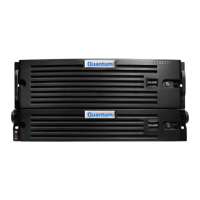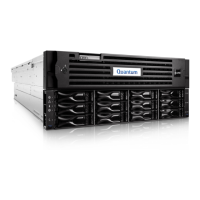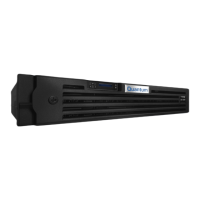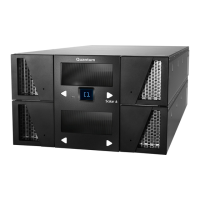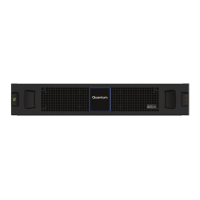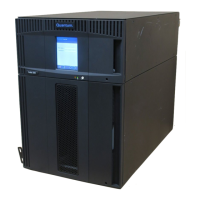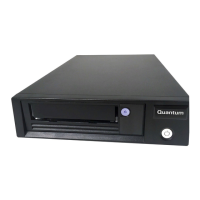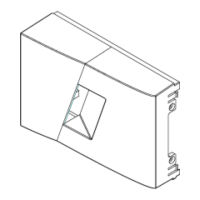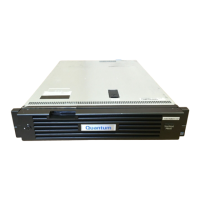Chapter 9: Configuration
OST Configuration
Quantum DXi4700 User’s Guide 242
LSU Name The name of the LSU.
Storage Server The storage server that contains the LSU.
Physical
Capacity
The physical storage capacity of the LSU.
Automatic
Image
Replication
The status of Automatic Image Replication (AIR) for the LSU (Enabled or Disabled), as well
as the configured targets (if any).
Note: To view details about the remote LSU if AIR is enabled, use the Edit Logical
Storage Unit page (see Editing an LSU on page 244).
Active
Connections
The number of currently active connections to the LSU.
Backup Images The number of backup images on the LSU.
Description A brief description of the LSU (if available).
Additional Information
l The LSU limit is 1000.
l Click a column heading to sort the rows in the table by that column. Click the column heading again to
reverse the sort order.
l The connections of a storage server that are used equals the data streams plus one for each LSU
polling. A backup job may generate more than one data stream if the data can be read in parallel. For
example, a policy that is backing up A, B, C, and D drives of a Windows system can generate four data
streams in parallel.
Adding an LSU
Add an LSU to a storage server to present the storage capacity of the DXi4700 as an LSU that is compatible
with backup applications that support OST. You can add an LSU with a specific capacity, or you can add an
LSU that uses the available capacity of the DXi4700.
Note: You must create a storage server before you can add an LSU (see Adding a Storage Server on
page 236).
To add an LSU to a storage server:
1. Click Add.
The Add Logical Storage Unit page displays (see on the next page).
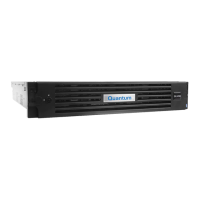
